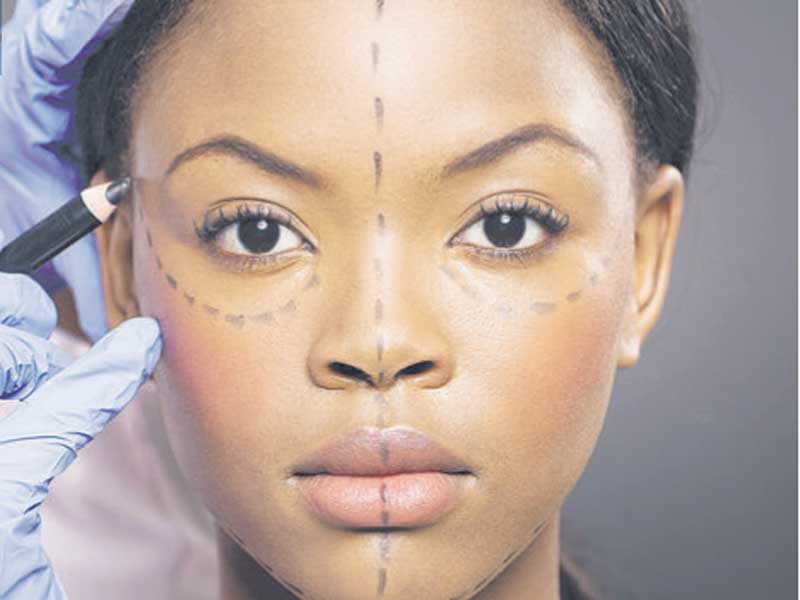
Before you consider going under the knife for some nip and tuck, have a look at what danger you could be facing.
With plastic surgery, you can have the type of body – and face - that you’ve always dreamed of – wrinkle-free with enlargements and reductions according to your specifications. Still, a number of things can go wrong during and after the procedure.
1. Brazilian butt lifts
Everyone wants a perky-looking dearie. However, as we advance in age, we lose the fight against gravity as things start going south. Large butts are a thing now, so if yours is not God-given, you can easily get one with a Brazilian butt lift. A surgeon will inject your buttock area with fat, which is mostly obtained from other parts of your body. But, if you’re too thin, the doctor will opt to use implants or fillers such as collagen and Restylane.
Danger: With plastic surgery on the rise, butt lifts can be dangerous as there are counterfeit fillers in the market. Quacks are also performing this procedure. If you use silicone, this may leak from your buttocks into other parts of your body. There are major blood vessels in the butt area that is being injected. If the doctor makes a misstep, the injection might be too deep and the fat, silicone or fillers can enter the blood stream through the veins. This might result in a pulmonary embolism – a fatal complication of cosmetic surgery that is mostcommon during Brazilian butt lifts.
If you’re thinking of getting a butt lift, ensure that the plastic surgeon is experienced and board certified, and that the facility is well-recognised.
2. Tummy tucks
Abdominoplasty, or a tummy tuck, helps trim excess fat from the stomach area, leaving you with a tightened up core. However, this procedure can be dangerous as it could result in blood clots. A tummy tuck cinches everything together. During recovery you are immobilised and have to stay crunched up. Since you don’t move around a lot, your blood can stagnate, causing clots which travel to your lungs when you become mobile. The risk is also heightened if you’re on hormones, older, overweight, or if you have previously gone under the knife.
Even though a tummy tuck will give you a defined waistline, if you’re a smoker, have poor hygiene and nutrition or a history of infection, you can develop serious surgery-related illnesses after the operation. There are surgeons who refuse to perform major operations such as tummy tucks and breast implants when they find out that the patient is a smoker due to the high risk of infection.
3. Large volume liposuction
There are those who’d like to get rid of a lot of fat at a go. However, one risks going into shock if they opt for large volume liposuction. This procedure causes dehydration, and in turn hypovolemic shock, as fluid tends to shift in the body. One’s also at risk of losing blood while under the knife. During surgery, you might also develop nerve damage, or you could die on the table. Post-operation complications such as blood clots – or too much fluid - in the lungs may occur. You can also develop fat clots that might travel to your heart and lungs too.
Hematoma (bleeding under the skin), edema (swelling) and seroma (fluid leaking under the skin), are other side effects of large volume liposuction. You’re also prone to develop kidney and heart problems after the operation. There are those who use this as a weight loss treatment, which it isn’t. This procedure becomes more dangerousif combined with a tummy tuck or a face lift as one has to stay under for a longer period. If you’ve been undergoing surgery for more than six hours, or you’re on hormones, you’re likely to develop blood clots.
4. Liquid silicone facial injections
This is a procedure that is, at times, performed by non-medically trained professions. As a result, the patient might end up with lifelong disfigurement, lumps and infection. Due to these complications, the patient might need surgery to remove the liquid silicone from the body. Some patients prefer silicone injections to fillers as they are cheaper – doctors also say that it is easier to work with. The US Food and Drug Administration had banned the use of liquid silicone as it was being used without sanction, but, in 1997, it approved its use to hold detached retinas in place. Doctors across the globe are now using it to add volume to cheeks and lips. It’s also used to fill wrinkles, too.
Stay informed. Subscribe to our newsletter
Other than swelling or bruising – normal post operation side effects - sometimes things don’t go according to script during cosmetic surgery. One can develop lumps, especially on the lips, an inflamed forehead, if you injected your brow, or a skin condition that’ll require visits to a dermatologist. Also, delayed reactions to silicone can happen one to 25 years after treatment. To be on the safe side, if you want high cheek bones, fuller lips or a wrinkle-free brow, stick with dermal fillers such as calcium hydroxylapatite or hyaluronic acid.
 The Standard Group Plc is a
multi-media organization with investments in media platforms spanning newspaper
print operations, television, radio broadcasting, digital and online services. The
Standard Group is recognized as a leading multi-media house in Kenya with a key
influence in matters of national and international interest.
The Standard Group Plc is a
multi-media organization with investments in media platforms spanning newspaper
print operations, television, radio broadcasting, digital and online services. The
Standard Group is recognized as a leading multi-media house in Kenya with a key
influence in matters of national and international interest.
 The Standard Group Plc is a
multi-media organization with investments in media platforms spanning newspaper
print operations, television, radio broadcasting, digital and online services. The
Standard Group is recognized as a leading multi-media house in Kenya with a key
influence in matters of national and international interest.
The Standard Group Plc is a
multi-media organization with investments in media platforms spanning newspaper
print operations, television, radio broadcasting, digital and online services. The
Standard Group is recognized as a leading multi-media house in Kenya with a key
influence in matters of national and international interest.









